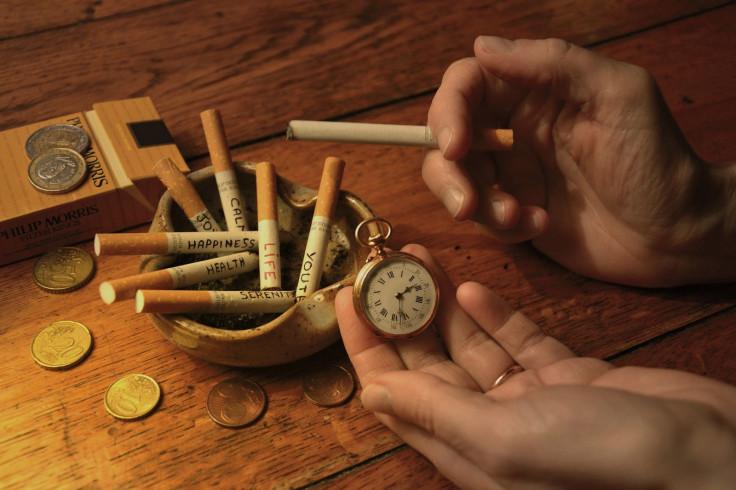Why Is It So Hard To Break A Habit? The Answer Could Help Treat Drug Addiction And Obesity

Unhealthy habits, including smoking, drug addiction, and even binge-watching television, can be tough to break. A recent study conducted by scientists from Duke University found that a habit leaves such a lasting impression on specific circuits in the brain that we become primed to feed those cravings. This research could end up providing treatment options for people suffering from alcoholism, drug addiction, and obesity.
"One day, we may be able to target these circuits in people to help promote habits that we want and kick out those that we don't want," said Dr. Nicole Calakos, an associate professor of neurology and neurobiology at Duke University Medical Center, in a statement.
How Habits Are Formed
Calakos and her colleagues trained healthy mice to form sugar habits by pressing a lever that would dispense tiny pieces of candy. The severity of each animal’s sugar habit varied with some becoming so addicted that they would keep pressing the lever even after the candy had been removed. The brains of mice that had formed a habit were compared to those that didn’t.
The research team studied electrical activity in the basal ganglia, a complex network in the brain that controls motor actions and compulsive behaviors, such as drug addiction. This area of the brain is home to two main types of pathways that carry opposing messages: one that carries a “go” signal to spur an action and one that carries a “stop” signal.
Both “go” and “stop” pathways were more active among mice that had formed a sugar habit. The “stop” signal is often viewed as something that helps prevent a behavior so researchers were surprised to find both signals active in mice with a habit. Pathways were also activated at different times with the “go” pathway turning on before the “stop” pathway in sugar-habit mice and vice versa in mice without a habit.
Researchers were able to predict which mice had formed a habit simply by looking at isolated pieces of the mouse’s brain on a petri dish which showed just how long-lasting and absolute these changes in the brain circuitry were. These changes occurred throughout the basal ganglia as oppose to a specific subset of brain cells. This could explain why being addicted to one thing leaves a person at risk for other unhealthy habits or addictions.
How To Break Unhealthy Habits
Now that we know what causes us to form unhealthy habits, how do we break out of them? Researchers started reversing the habit by rewarding the mice when they stopped pressing the lever. Mice that were successful in quitting had weaker “go” cells. Unfortunately, treating this problem with medicine would be difficult considering the basal ganglia controls a variety of different functions. Calakos’ team is currently looking into treating drug addiction with transcranial magnetic stimulation (TMS), a noninvasive technique that uses magnetic pulses to stimulate the brain.
"TMS is an inroad to access these circuits in more severe diseases," Calakos added. "Simpler, behavioral strategies many of us try may also tap into similar mechanisms. It may be just a matter of figuring out which of them are the most effective."
Using the information to treat alcoholism or addiction is the goal of the Duke University research team. However, people would have a much easier time using these findings to remedy less severe anxiety habits that are still bad for you, including nail-biting, teeth clenching and grinding, hair pulling, and face touching.
Source: O’Hare J, Yin H, Calakos N, et al. Pathway-Specific Striatal Substrates for Habitual Behavior. Neuron. 2015.



























